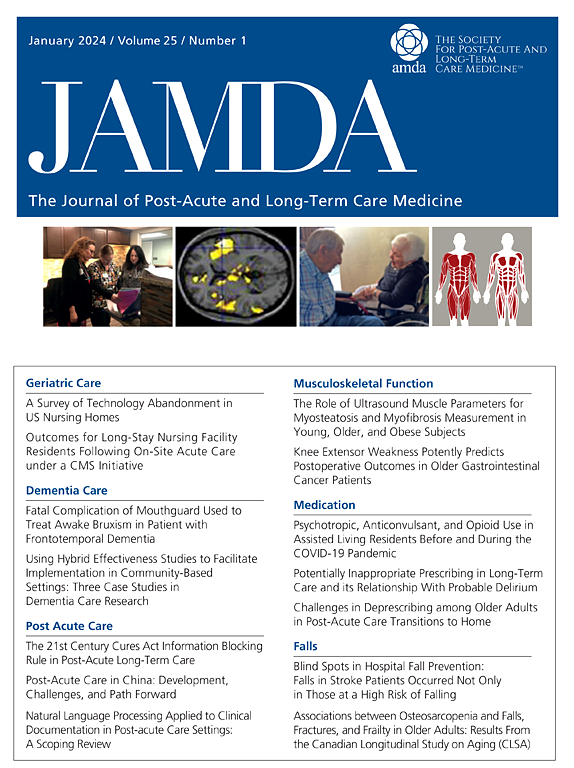利用机器学习识别影响住院病人出院处置的健康社会决定因素。
IF 4.2
2区 医学
Q2 GERIATRICS & GERONTOLOGY
Journal of the American Medical Directors Association
Pub Date : 2025-03-20
DOI:10.1016/j.jamda.2025.105524
引用次数: 0
摘要
本文章由计算机程序翻译,如有差异,请以英文原文为准。
Using Machine Learning to Identify Social Determinants of Health that Impact Discharge Disposition for Hospitalized Patients
Objective
To identify self-reported social determinants of health (SDOH) among hospitalized patients that predict discharge to a skilled nursing facility (SNF).
Design
A retrospective cohort analysis of 134,807 hospitalized patients from electronic medical records.
Setting and Participants
All patients admitted to hospitals within a large multistate tertiary health system.
Methods
The primary outcome was hospital disposition (home discharge vs SNF). The cohort was split into derivation and validation sets (75/25). We adopted 2 regularized regression-based statistical approaches, namely, the stacked elastic net (SENET) and bootstrap imputation-stability selection (BISS), to implement variable selection with incomplete data. After variable selection, logistic regression with the selected variables was conducted to create the final predictive model. The prediction accuracy and model fairness were evaluated on the test dataset using the area under the curve (AUC), equal AUC, and calibration.
Results
In the sample, 8.72% of patients were discharged to an SNF. The final models included between 11 and 15 variables. Significant SDOH variables included alcohol consumption, dental check, employment status, financial resources, nutrition, physical activities, social connection, and transportation needs. The final models also included 1 clinical (Charlson Comorbidity Index) and 2 demographic (marital status and education level) characteristics. The final models were confirmed across methods and datasets, predicted well in the validation cohort (AUC around 0.77), and were well calibrated.
Conclusions and Implications
Multiple SDOH characteristics predict SNF disposition, especially the lack of a life partner or spouse, are potentially mitigable (nutrition, physical activities, and transportation needs), and offer actionable targets to increase home discharge rates. The collection and integration of SDOH data may optimize the appropriateness and efficiency discharge planning.
求助全文
通过发布文献求助,成功后即可免费获取论文全文。
去求助
来源期刊
CiteScore
11.10
自引率
6.60%
发文量
472
审稿时长
44 days
期刊介绍:
JAMDA, the official journal of AMDA - The Society for Post-Acute and Long-Term Care Medicine, is a leading peer-reviewed publication that offers practical information and research geared towards healthcare professionals in the post-acute and long-term care fields. It is also a valuable resource for policy-makers, organizational leaders, educators, and advocates.
The journal provides essential information for various healthcare professionals such as medical directors, attending physicians, nurses, consultant pharmacists, geriatric psychiatrists, nurse practitioners, physician assistants, physical and occupational therapists, social workers, and others involved in providing, overseeing, and promoting quality

 求助内容:
求助内容: 应助结果提醒方式:
应助结果提醒方式:


